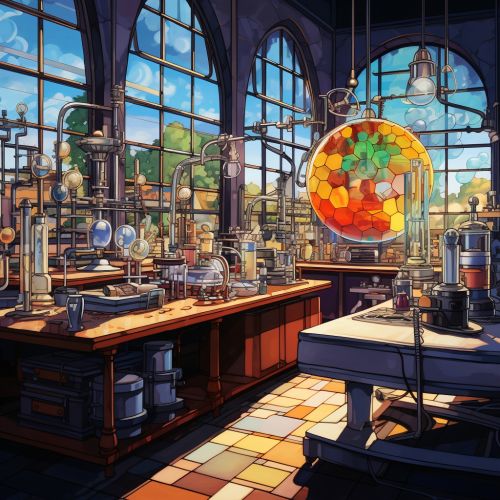Recombinant DNA Technology
Introduction
Recombinant DNA (rDNA) technology, also known as genetic engineering, is a molecular biology technique that manipulates the genetic material of organisms to create combinations of genes that do not occur naturally. The technology has revolutionized the field of biotechnology, enabling the production of genetically modified organisms (GMOs), pharmaceutical drugs, and biofuels.
History
The development of recombinant DNA technology originated from the discovery of deoxyribonucleic acid as the genetic material. In the 1950s, scientists James Watson and Francis Crick elucidated the double helix structure of DNA, paving the way for understanding how genetic information is stored and transmitted. The discovery of restriction enzymes in the late 1960s by Werner Arber, Daniel Nathans, and Hamilton Smith further propelled the development of rDNA technology. These enzymes, which can cut DNA at specific sequences, became essential tools for manipulating genetic material.


Principles of Recombinant DNA Technology
The process of creating recombinant DNA involves several steps. First, the gene of interest is isolated from the DNA of a donor organism using restriction enzymes. The isolated gene is then inserted into a vector, typically a plasmid, which is a small, circular piece of DNA found in bacteria. The vector is then introduced into a host organism, such as a bacterium, where it can replicate and produce the protein encoded by the inserted gene.
Techniques
Several techniques are integral to rDNA technology, including gene cloning, polymerase chain reaction (PCR), and DNA sequencing.
Gene Cloning
Gene cloning involves the replication of a specific gene of interest. The gene is inserted into a vector, which is then introduced into a host organism. As the host organism replicates, it also replicates the inserted gene, producing multiple copies.
Polymerase Chain Reaction
The polymerase chain reaction (PCR) is a technique used to amplify a specific DNA sequence. It involves repeated cycles of heating and cooling to denature the DNA, anneal primers, and extend the DNA strands.
DNA Sequencing
DNA sequencing is the process of determining the order of nucleotides in a DNA molecule. It provides detailed information about the genetic code and is essential in identifying and studying genes.
Applications
Recombinant DNA technology has numerous applications in medicine, agriculture, and industry.
Medicine
In medicine, rDNA technology is used to produce pharmaceutical drugs such as insulin, growth hormones, and vaccines. It is also used in gene therapy, a treatment method that involves replacing, inactivating, or introducing genes into a patient's cells to treat or prevent disease.
Agriculture
In agriculture, rDNA technology is used to create genetically modified organisms (GMOs) with desirable traits, such as resistance to pests, diseases, or harsh environmental conditions.
Industry
In industry, rDNA technology is used to produce enzymes, biofuels, and biodegradable plastics. It is also used in environmental cleanup through the creation of organisms designed to degrade pollutants.
Ethical and Safety Considerations
The use of recombinant DNA technology raises several ethical and safety concerns. These include the potential for creating harmful organisms, the impact of GMOs on the environment and biodiversity, and the ethical implications of genetic modification in humans.
Future Directions
The future of recombinant DNA technology lies in advancements in techniques such as CRISPR-Cas9, a powerful tool for editing genomes. With these advancements, the potential applications and implications of rDNA technology are vast and continually evolving.
